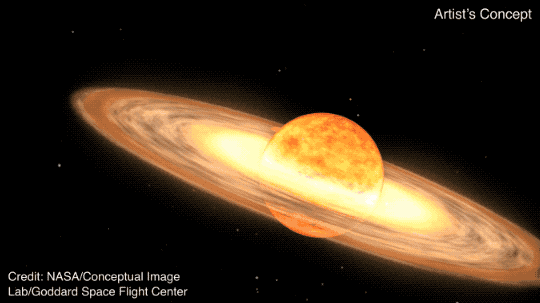A once-in-a-lifetime celestial event may be nearing — and Canadians will be able to see when it does.

From our perspective on Earth, the binary star T Corona Borealis is set to go nova — which it does every 80 years — before September.

The star is normally too faint to see with the naked eye but the explosion, when it occurs, will be nearly as bright as the North Star, according to NASA.
“This is a real, live stellar laboratory where we can look at … all sorts of astrophysical interesting processes,” York University professor emeritus of physics and astronomy Paul Delaney told Global News.
It’s actually two stars, a younger and larger red giant and an older, smaller white dwarf, and the last nova visible from Earth occurred in 1946.
“The stars are close enough that as the red giant becomes unstable from its increasing temperature and pressure and begins ejecting its outer layers, the white dwarf collects that matter onto its surface,” the NASA website states.
“The shallow, dense atmosphere of the white dwarf eventually heats enough to cause a runaway thermonuclear reaction, which produces the nova we see from Earth.”
Astronomers say T Corona Borealis will go nova. This map shows where in the eastern sky in Canada you can find it. Delaney clarified it’s the hydrogen around the white dwarf that undergoes a fusion explosion while the dwarf survives.
He predicted every single NASA asset — and many amateur astronomers’ telescopes — will be pointed at the nova.
While scientists understand the process by which stars grow, function and die, he said T Corona Borealis’s nova will likely provide key insights that will show “the difference between theory and practice.”
“To be able to examine what happens during those processes is really very important to our overall theoretical understanding of stellar evolution,” he said, speaking from Hillsdale, Ont., near Barrie.

Having so many telescopes on the lookout will be helpful, because scientists don’t know exactly when it will go nova.
When it does, it will be just below the Corona Borealis, in the eastern sky.
To find it, face east and look up to find the Big Dipper (which is an asterism, meaning it’s not considered a true constellation), part of Ursa Major (which is).
Follow the arc of the handle of the Dipper towards the horizon until you see the brightest star in the region. That’s Arcturus, and to the left you’ll see a crescent constellation, which is Corona Borealis.
When T Corona Borealis goes nova, it will be bright and just next to it.





Comments